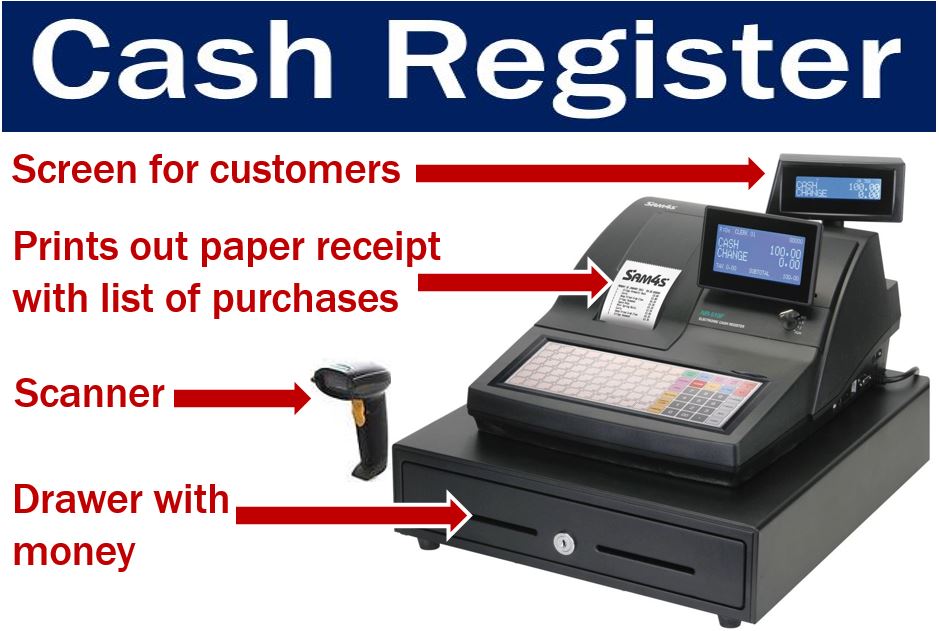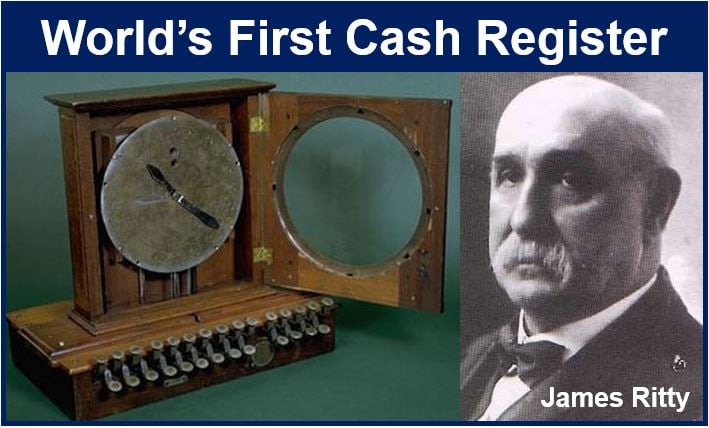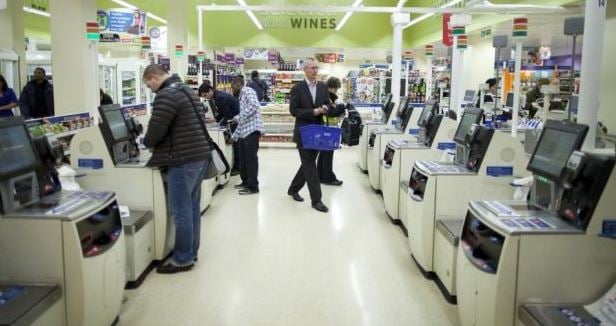Cash register – definition and meaning
A Cash Register is a machine for calculating and registering transactions. A cash register has a drawer attached underneath for storing cash. Cash registers used to be mechanical, but most of them today are electronic.
In the United Kingdom, Ireland, and some other Commonwealth nations, ‘Till’ means the same as ‘cash register.’
Some are self-service
Most cash registers print out receipts and other record-keeping data. In fact, customers can use many of the modern ones with no intervention from sales staff.
Advancements in technology have integrated digital payment systems directly with cash registers, allowing for seamless transactions using credit cards, mobile phones, and even cryptocurrency.
Modern cash registers also offer features like inventory tracking, sales trends analysis, and digital loyalty programs, enriching both the merchant’s and the customer’s experience
American saloonkeeper and inventors James Ritty and John Birch invented the cash register. They invented the device shortly after the American Civil War.
Mr. Ritty wanted to find a way to stop bartenders stealing his money at his saloon in Dayton, Ohio. So, he started thinking of a device that could prevent pilfering.
Their inspiration came from observing how a tool counted the revolutions of the propeller on a steamship. In 1879, they created the Ritty Model I9. With the help of his brother, John Ritty, they patented the model in 1883 and called it Ritty’s Incorruptible Cashier.

The first cash registers were mechanical devices that did not print out receipts. In fact, they were simple adding machines with a bell and a drawer. Employees had to key in every sale on the register. When somebody pushed the ‘total’ key, a bell would subsequently ring, and the drawer would open.
The ringing sound alerted the owner or manager that a sale was taking place.
National Cash Register Company
Not long after registering the patent, Mr. Ritty found he could not cope with the massive increase in his workload. So, he sold his interest in the cash register business to Jacob H. Eckert of Cincinnati. Mr. Eckert formed the National Manufacturing Company.
Mr. Eckert sold the firm to John H. Patterson, who renamed it the National Cash Register Company (NCR). NCR is today a multinational, hi-tech company with more than 30,000 employees.
Mr. Patterson added a roll of paper to the cash register so that it could record sales transactions.
Inventor Charles F. Kettering (1876-1958), an NCR employee, designed a cash register with an electric motor in 1906.
Mr. Kettering eventually became the holder of 186 patents. In fact, he went on to become head of research at General Motors.

Over the past 130 years, cash registers have changed considerably in how they look and what they can do. How people use them has also changed.
Many supermarket chains today have self-checkout devices. Customers scan the barcodes, pay by cash or card, and bag their shopping. They do all this without any intervention from the staff. A staff member is available in case you need help.
Employees are also at hand to check customer’s ID. They need to make sure customers are old enough to buy some products. For example, if you want to buy alcoholic beverages, the employee needs to approve the sale.

According to the Merriam-Webster Dictionary, a cash register is:
“A machine used in a store, restaurant, etc., that calculates the amount of cash due for a sale and has a drawer for holding money.”
A cashier is a person who operates a cash register.
Video – What is a Cash Register?
This video, from our sister channel on YouTube – Marketing Business Network, explains what a ‘Cash Register’ is using simple and easy-to-understand language and examples.

